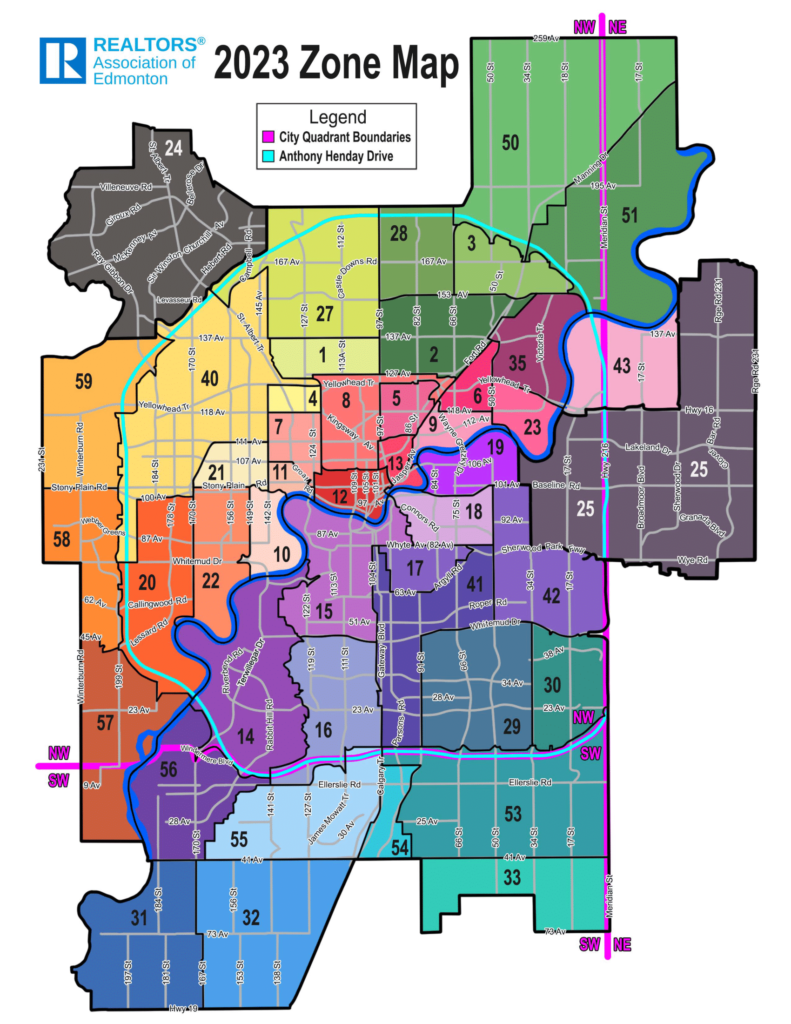Edmonton is the capital city of the Canadian province of Alberta. It is situated on the North Saskatchewan River and is the centre of the Edmonton
Metropolitan Region. Known as the "Gateway to the North" outside of Ontario, Edmonton has become a staging point for large-scale oil
sands projects occurring in northern Alberta and large-scale diamond mining operations in the Northwest Territories. It is a cultural, governmental
and educational centre that hosts festivals year-round, reflected in the nickname "Canada's Festival City". It is home to Canada's largest mall, West
Edmonton Mall (the world's largest mall from 1981 until 2004); and Fort Edmonton Park, Canada's largest living history museum.
Edmonton is divided into 375 neighbourhoods within seven geographic sectors – a mature area sector, which includes neighbourhoods
that were essentially built out before 1970, and six surrounding suburban sectors.
Edmonton's Downtown is within the city's mature area or inner city. It and the surrounding Boyle Street, Central
McDougall, Cloverdale, Garneau, McCauley, Oliver, Queen Mary Park, Riverdale, Rossdale, Strathcona and University of Alberta form
Edmonton's Central Core. Oliver and Garneau are the city's most populated and most densely populated neighbourhoods respectively.
The mature area sector also contains the five former urban municipalities annexed by the city over its history: Beverly, Jasper Place,
North Edmonton, Strathcona and West Edmonton (Calder).
Larger residential areas within Edmonton's six suburban sectors, each comprising multiple neighbourhoods, include Heritage
Valley, Kaskitayo, Riverbend, Terwillegar Heights and Windermere (southwest sector); The Grange, Lewis Farms and West Jasper
Place (west sector); Big Lake (northwest sector); Castle Downs, Lake District and The Palisades (north sector); Casselman-Steele
Heights, Clareview, Hermitage, Londonderry and Pilot Sound (northeast sector); and Ellerslie, The Meadows, Mill Woods
and Southeast Edmonton (southeast sector). Mill Woods is divided into a town centre community (Mill Woods Town Centre) and eight
surrounding communities: Burnewood, Knottwood, Lakewood, Millbourne, Millhurst, Ridgewood, Southwood, and Woodvale. Each has
between two and four neighbourhoods.
Several transit-oriented developments (TOD) have begun to appear along the LRT line at Clareview, with future developments planned
at Belvedere (part of the Old Town Fort Road Redevelopment Project). Another TOD, Century Park, is being constructed at the site of
what was once Heritage Mall, at the southern end of the LRT line. Century Park will eventually house up to 5,000 residents.
The Edmonton City Centre Airport is being redeveloped into a sustainable community of 30,000 people called Blatchford, comprising a
transit-oriented mixed use town centre, townhouses, low, medium and high rise apartments, neighbourhood retail and service uses,
renewable energy, district heating and cooling, and a major park. The first residents moved into Blatchford in November 2020.











